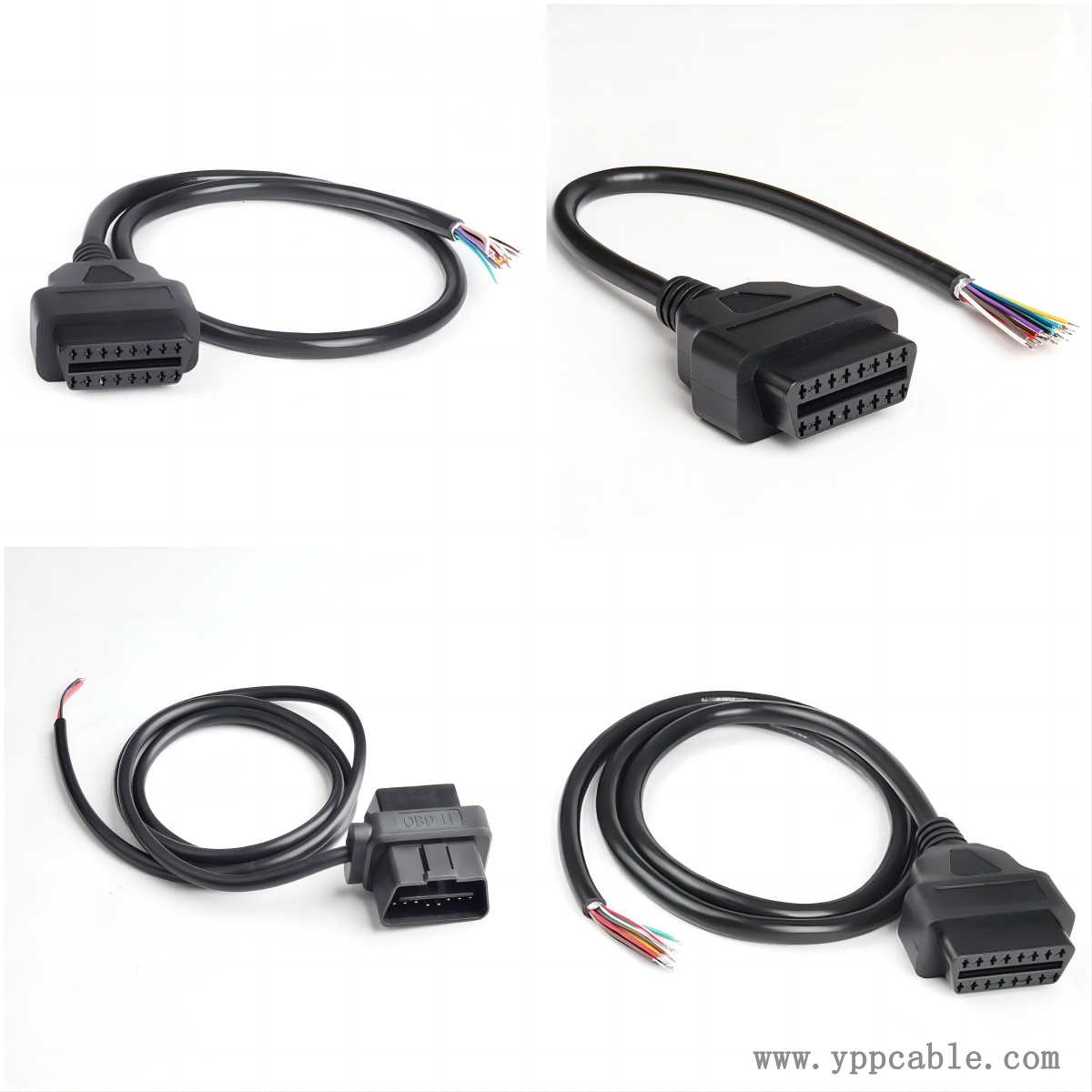Selection of OBD2 16 pin to open end cable: key technical parameters and adaptation principles
In automotive diagnosis, modification, or data acquisition scenarios, the selection of OBD2 16 pin to open end cables directly affects equipment compatibility and safety. It is important to focus on the four core parameters of core specifications, shielding performance, interface materials, and scene adaptability, while adhering to the principle of "matching as needed".

Core specifications are the basis for selection. Firstly, let's take a look at the core material. Pure copper material has excellent conductivity, but the cost is relatively high; Tin plated copper material has stronger oxidation resistance and moderate cost, making it the mainstream choice.
The shielding performance determines the anti-interference ability. There is high-frequency electromagnetic interference in the automotive environment, and the cable shielding layer needs to meet the "dual shielding" design: the inner layer is shielded with aluminum foil to block high-frequency interference; The outer layer is made of tin plated copper woven mesh to enhance mechanical strength and low-frequency interference shielding effect.
The compatibility between interface materials and scenes cannot be ignored. The OBD2 plug should be made of high-temperature resistant plastic, and the pins should be made of brass gold-plated material to prevent poor contact caused by pin oxidation; It is recommended to choose crimped cold pressed terminals for open end terminals to facilitate docking with external devices.
Contact: Kevin Yu
Phone:
E-mail: yppcable@126.com
Whatsapp:
Add: FL2,Bld 6, Hongte Industrial Park, Yongtou , Changan, Dongguan, Guangdong